Introduction
In the world of networking, Microsoft Network Adapter Multiplexor Protocol (also known as Microsoft NMPI) often remains an enigmatic term for many. This blog aims to shed light on this technology, exploring what it is, when it should be used, and when it’s best to avoid it. Understanding NMPI can empower network administrators to optimize their systems and make informed decisions when configuring network connections.
What is Microsoft Network Adapter Multiplexor Protocol?
Microsoft Network Adapter Multiplexor Protocol (NMPI) is a virtual network adapter that comes bundled with Windows operating systems. It is a feature included in the Network Bridge functionality and facilitates the aggregation of multiple physical network adapters into a single virtual network interface. In simpler terms, NMPI allows combining several network adapters into one, effectively increasing the available bandwidth and improving network performance.
When to Use Microsoft Network Adapter Multiplexor Protocol?
- Increased Bandwidth and Load Balancing: One of the primary use cases of NMPI is to enhance network performance by combining multiple network adapters. This is particularly useful in scenarios where you have several network interfaces available, and you want to utilize all of them simultaneously to distribute network traffic efficiently. It facilitates load balancing across the physical adapters, ensuring that no single adapter becomes a bottleneck.
- Fault Tolerance and Redundancy: NMPI can also be employed to achieve fault tolerance and redundancy. If one physical network adapter fails, the virtual adapter created through NMPI can automatically reroute the traffic through the remaining active adapters. This redundancy ensures that network connectivity is maintained even in the event of hardware failure, increasing the reliability of the network.
When Not to Use Microsoft Network Adapter Multiplexor Protocol?
- Single Network Adapter Configurations: If your system has only one network adapter, using NMPI is unnecessary. Since there’s no additional physical adapter to aggregate, the benefits of NMPI won’t be realized. In such cases, a simple network configuration without NMPI will suffice.
- Network Adapter Compatibility: Not all network adapters support NMPI or are compatible with the feature. Before attempting to use NMPI, verify that all the physical adapters you intend to combine are capable of supporting this protocol. Using incompatible adapters can lead to connectivity issues and other network problems.
- Advanced Network Configurations: In some complex networking environments, especially those involving specific VLAN configurations or network teaming/bonding, NMPI may not play well with these setups. Implementing NMPI in such cases might result in conflicts and disrupt the network functionality.
Wanting to learn more about managing your Windows computer? Take a look at our Microsoft Managing Modern Desktops training course. At ITU, we also offer entensive training on Microsoft Office Products designed to maximize your productivity.
For more advanced training in computer Networking, check out our CompTIA Network+ course designed to provide students with exceptional training for an IT career in networking.
Steps to turn on or off Microsoft Network Adapter Multiplexor Protocol
Turning on or off Microsoft Network Adapter Multiplexor Protocol involves a few straightforward steps. Please note that these instructions are based on Windows 10, and the steps may vary slightly in other Windows versions. Here’s how you can enable or disable NMPI:
Step 1: Open Network Connections
- Right-click on the Start button and select “Network Connections” from the context menu. Alternatively, you can press “Windows Key + R,” type “ncpa.cpl” in the Run dialog, and hit Enter.
Step 2: Access Network Adapter Properties
- In the Network Connections window, you’ll see a list of all available network adapters. Look for the network adapters that you want to combine using NMPI. To select multiple adapters, hold the “Ctrl” key and click on each adapter you want to include.
- Once you have selected the appropriate network adapters, right-click on one of them and choose “Properties.”
Step 3: Enable or Disable Microsoft Network Adapter Multiplexor Protocol
- In the Network Adapter Properties window, you will see a list of networking components used by the selected network adapters.
- Locate “Microsoft Network Adapter Multiplexor Protocol” in the list. If you want to enable NMPI, check the box next to it. If you want to disable NMPI, uncheck the box.
Step 4: Configure Network Bridge (if necessary)
- If you are enabling NMPI to create a network bridge, click on the “Network Bridge” option in the Network Connections window. Then, click on “Create a network bridge” in the top menu. Drag and drop the network adapters that you want to bridge into the newly created bridge.
- To finalize the changes, click “OK” or “Apply” in the Network Adapter Properties window and any other open windows.
Step 5: Verify Network Adapter Multiplexor Protocol Status
- To ensure that the changes have been applied successfully, you can check the network status or use the “ipconfig” command in the Command Prompt to see if the virtual network adapter created by NMPI is active.
- Open Command Prompt (Windows Key + R, then type “cmd” and hit Enter).
- Type “ipconfig” and press Enter. Look for the virtual adapter, which should have a name like “Ethernet adapter <Network Bridge>.”
That’s it! You have now turned on or off Microsoft Network Adapter Multiplexor Protocol based on your requirements. Remember that these changes may require administrative privileges, so make sure you have the necessary permissions before making any adjustments.
Conclusion
Microsoft Network Adapter Multiplexor Protocol (NMPI) can be a powerful tool to boost network performance, distribute traffic across multiple adapters, and provide fault tolerance. When used correctly in scenarios with multiple network adapters and compatibility, NMPI can significantly improve overall network efficiency and reliability.
However, it’s essential to understand that NMPI is not a one-size-fits-all solution. In simple network setups with only one adapter or in complex networking environments with specialized configurations, NMPI may not be the ideal choice. As with any network configuration, careful consideration of your specific requirements and thorough testing are essential before implementing Microsoft Network Adapter Multiplexor Protocol in your network infrastructure.
Frequently Asked Questions :
What is the Microsoft Network Adapter Multiplexor Protocol and when is it used?
The Microsoft Network Adapter Multiplexor Protocol is a specialized protocol used within Windows operating systems. It’s primarily designed for facilitating network adapter bonding, also known as NIC teaming. This protocol becomes active when two or more network interfaces are combined to function as a single virtual network interface. This enhances the bandwidth and provides redundancy, ensuring network communication remains uninterrupted even if one adapter fails.
How do I enable Microsoft Network Adapter Multiplexor Protocol on my computer?
Enabling the Microsoft Network Adapter Multiplexor Protocol is not done manually by the user. It is automatically activated when you configure NIC teaming through the Network and Sharing Center or using PowerShell commands in Windows. Once you set up NIC teaming, the protocol is enabled as part of the process, allowing the virtual network adapter created by the teaming to operate effectively.
Can the Microsoft Network Adapter Multiplexor Protocol improve my internet speed?
The Microsoft Network Adapter Multiplexor Protocol itself does not directly increase your internet speed. However, by enabling NIC teaming, it allows for the aggregation of bandwidth from multiple network adapters, potentially improving the throughput and redundancy of your network connection. The actual improvement in internet speed can depend on several factors including your network environment, the quality of the network adapters, and the configuration of the NIC teaming.
Is the Microsoft Network Adapter Multiplexor Protocol available on all versions of Windows?
The Microsoft Network Adapter Multiplexor Protocol is available on Windows versions that support NIC teaming, typically found in Windows Server editions and some professional or enterprise versions of Windows. It is not available in home editions or versions of Windows that do not support NIC teaming functionality.
What are the benefits of using Microsoft Network Adapter Multiplexor Protocol for businesses?
For businesses, using the Microsoft Network Adapter Multiplexor Protocol through NIC teaming offers several benefits. It enhances network reliability and availability by ensuring continuous network connectivity even if one network adapter fails. Additionally, it can aggregate the bandwidth of multiple network adapters, potentially increasing the network throughput and accommodating higher traffic volumes. This is particularly beneficial in environments with high data transfer demands or those requiring high availability and redundancy in their network connections.










